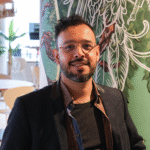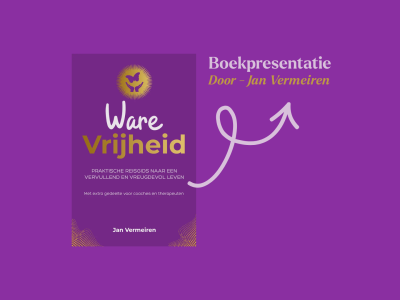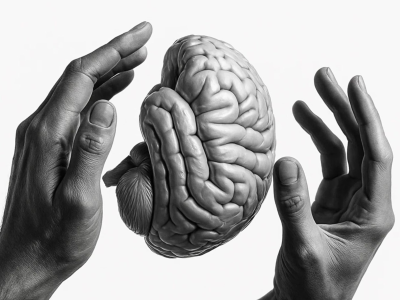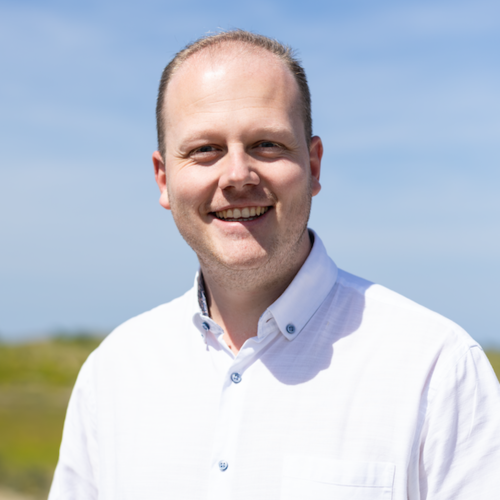By Victor Evink
Imagine: you are walking through a modern smart city. Buildings react to the weather, traffic lights adjust automatically based on traffic flows, and digital systems continuously collect data to optimise services. Is this city designed from the idea that efficiency is paramount? Or is human interaction and well-being central? Or perhaps ecology and sustainability? Behind every design is a fundamental view of what is valuable - a values paradigm.
The future is not a fixed goal
The future is a changing landscape shaped by our perceptions, stories and actions. How we imagine tomorrow influences the choices we make today, subtly steering the course of history. Science fiction, speculative design and worldbuilding are not just creative exercises, they are tools to explore possibilities, test ideas and even plant the seeds of real change.
In my earlier articles, Future plants and Future, plural AND verb, I explored how fiction shapes reality and how we can navigate through the indeterminacy of multiple futures. In my new article Tending Ambitopias On Substack, I continue where the previous ones ended. Here I elaborate on value paradigms, ambitious science fiction and how I have applied these concepts in my work with filmmaker Emilia Tapprest for Liminal Vision.

Two contrasting visions of the smart city generated by ChatGPT. Left: a city designed for centralised efficiency with surveillance and automation. Right: a city built for community autonomy with participatory design and biomimetic infrastructure. Such simplified contrasts often contain subtle “dystopia versus utopia” undertones.
Understanding value paradigms: From theory to practice
Value paradigms are, simply put, our deeply held beliefs about what constitutes a good life and a good society. They are the basic assumptions that determine how we think about morality, human nature and how we should live together.
You can think of value paradigms as a mycelial network beneath a forest. Just as these invisible fungal threads transport nutrients, make connections between trees and influence the entire ecosystem, value paradigms are the underlying structure that determines what is visible above ground - from technology to institutions social practices. They are often invisible but have profound and far-reaching effects on the world we create.
For organisations and professionals, this perspective offers concrete tools for decisions in the here-and-now:
- In project development: On which value paradigm is your approach based? Does this align with the values of your target audience or stakeholders?
- In case of team conflicts: If your team is divided on a solution, there may be different value paradigms underlying it that need to be made explicit
- On trend analysis: Looking at developments in your industry, what value paradigms drive these changes and how do you position yourself to do so?
In a time of rapid change and increasing complexity, understanding value paradigms helps you unravel conflicts, make better decisions and drive innovation more deliberately. Many disagreements over technology, policy or strategy are essentially clashes between different value paradigms. By making these deeper structures visible, you can see past the symptoms and get to the heart of vision differences.
Value paradigms in action
Value paradigms are all around us, and often form the basis of future divisions, which remain invisible as long as differences can be transcended for the sake of a common goal. Take the climate movement, for example. At first glance, it appears to be a united front with a shared agenda. But as soon as it comes to concrete decisions on how we tackle climate change, the underlying value differences come to light:
- Technological solutions: Some believe in large-scale geoengineering, nuclear power or industrial mega renewable energy projects that can sustain existing consumption patterns
- Social transformation: Seeing others degrowth-initiatives as essential, redefining prosperity beyond wanting to have and buy more and more
- Policy reform: Still others focus on international laws and regulations or other institutional reforms adapted to global challenges
- Spiritual renewal: And one group sees all of the above as meaningless without a fundamental, inner transformation of our consciousness and relationship with ourselves, our bodies, the planet and the cosmos
What seem like tactical disagreements often reflect deeper philosophical cleavages about humanity's relationship with technology, nature and each other. Understanding these hidden value paradigms is essential for finding meaningful paths forward.

Seemingly united movements split over time because of hidden value differences. Climate action starts as a common goal but splinters as soon as concrete choices have to be made, leaving underlying value differenceslen become visible.
The garden of possibilities: From insight to action
In my research project Embodied Ambitopias Emilia and I ourselves use the concept of value paradigms to imagine fictional visions of the future and to compare them. Instead of prescribing one “right” vision or direction, we offer a playing field of possible ambitiously futures - hopeful and achievable, but driven by quite different value paradigms.
1. Dolphin Waves: Ludified Surveillance Capitalism
A society in which “play” has replaced “work” as an economic foundation. In this world, people generate value by simply playing and having fun, while their movements, emotions and interactions are continuously recorded as training data for AI systems. Luxury play campuses are the physical manifestation of an economy in which physical expression and entertainment have been transformed into valuable commodities.
The key question: If economic participation becomes synonymous with play, would that mean freedom, or is it just a more pleasant form of extraction?
2. Dragonfly: Posthumanist Ecosystem Design
A post-democratic society in which governance is modelled on ecological principles. AI systems mediate between different species - humans, animals, plants and ecosystems - as full stakeholders. Advanced technologies for cross-species communication, ubiquitous environmental sensors and ecological monitoring have coalesced into a governance model in which decision-making is no longer an exclusive human prerogative. Instead, it becomes a co-creation between humans, AI and nature, aimed at harmony and sustainable integration, where data does not have primary economic value but serves as a foundation for solving collective challenges.
The key question: If AI-driven governance delivers long-term sustainability and ecological harmony, does this justify revising human autonomy as a central principle?
3. Project Gecko: Embodied Liquid Democracy
A decentralised network of ecovillage-like communities where liquid democracy through protocols rooted in the body itself. Inspired by insights from trauma healing and movement therapy, Project Gecko starts from the principle that profound social transformation cannot be imposed from above, but must be anchored through bodily experience. Old movement practices are intertwined with new technology, with participation in decision-making through embodied protocols and conscious dance. Digital interactions are fundamentally linked to physical actions, recognising the wisdom of the body as an essential source of collective intelligence.
The key question: Can a democracy rooted in bodily wisdom and shared physical experience cultivate a deeper form of community and ecological consciousness than systems based primarily on abstract, cognitive interactions?

Film footage of Dolphin Waves (left), Dragonfly (centre) and Project Gecko (right). The film Emilia and I made as a result of the research invites you to experience these worlds. Film can be a good way to make possible futures “tangible”. (With thanks to nvisible.studio)
We hope that concrete, “replayable” images of the future such as these can begin to act as compass points on a foggy sea of possibilities. Just as seafarers used to navigate by lighthouses and constellations, these images of the future provide reference points with which to interpret contemporary developments. Dystopian science-fiction classics like 1984, Brave New World and The Terminator have long served as warning beacons, but we desperately need more hopeful alternatives that go beyond mere criticism - alternatives that also illuminate concrete paths forward.
As I described in Future plants, the future is like a garden that needs tending. Some ideas germinate quickly in current conditions; others need different conditions or a lot of extra attention to thrive. The question is not just which futures are possible, but which ones we want to actively cultivate.
Curious about more? Follow me on Substack for more such ideas and how they can be applied in your work and organisation.













